
Designing an App for First-Time Computer Users
Conducted a human-centered research & design sprint in Jocotenango, Guatemala to explore product-market fit. Created an inventory app for shop owners.
The ChallengeEndless’s mission is to put the power of the Internet into the hands of those who don’t have access to it. Their main product is Endless OS – a free, easy to use operating system designed for people with little to no Internet connectivity.
I joined Endless for a 9-week research and design sprint in Jocotenango, Guatemala, to design, test, and build a desktop app for Endless OS end-to-end.
We followed IDEO’s human-centered design process to help us approach the sprint in a methodological way:
1: Gather Inspiration
Give our team adequate time to get a feel for the context. Spend lots of time observing how people live and use Internet and computers, talking to people, and understanding people’s needs and desires related to offline Internet. Identify some challenges that an Endless OS app could solve for. Formulate our design question.
2: Ideate
Synthesize our key research findings, and ideate an app solution to our design question. Design & prototype the app, and start testing with people and iterating.
3: Implement
Build the entire app end-to-end.
And finally, identify additional challenges and opportunities in this market that Endless could pursue after the sprint.
CompanyMy rolesLead product designer under a mentor, researcher
LocationJocotenango, Guatemala
Length9 weeks
TeamJoana Filizola, Shai Wilson, Matthew Watson, Dacks Milliken, Eddy Alegria
Research and Discovery
We started with 3 weeks of preliminary research to understand the community better, gain context, and identify potential challenges that we could later formulate into a design question. We visited libraries, schools, internet cafes, homes (with permission, of course), markets, shops, and took lots of bumpy tuk-tuk rides. We talked to as many people as we could, asked questions, and created relationships. Some people were hesitant (most of us were clearly foreigners), but many people were happy to talk to us.
Some of my peers were new to both research and Central America, so I helped guide an understanding of the importance of body language and eye contact throughout interviews, and how to take notes without being rude.
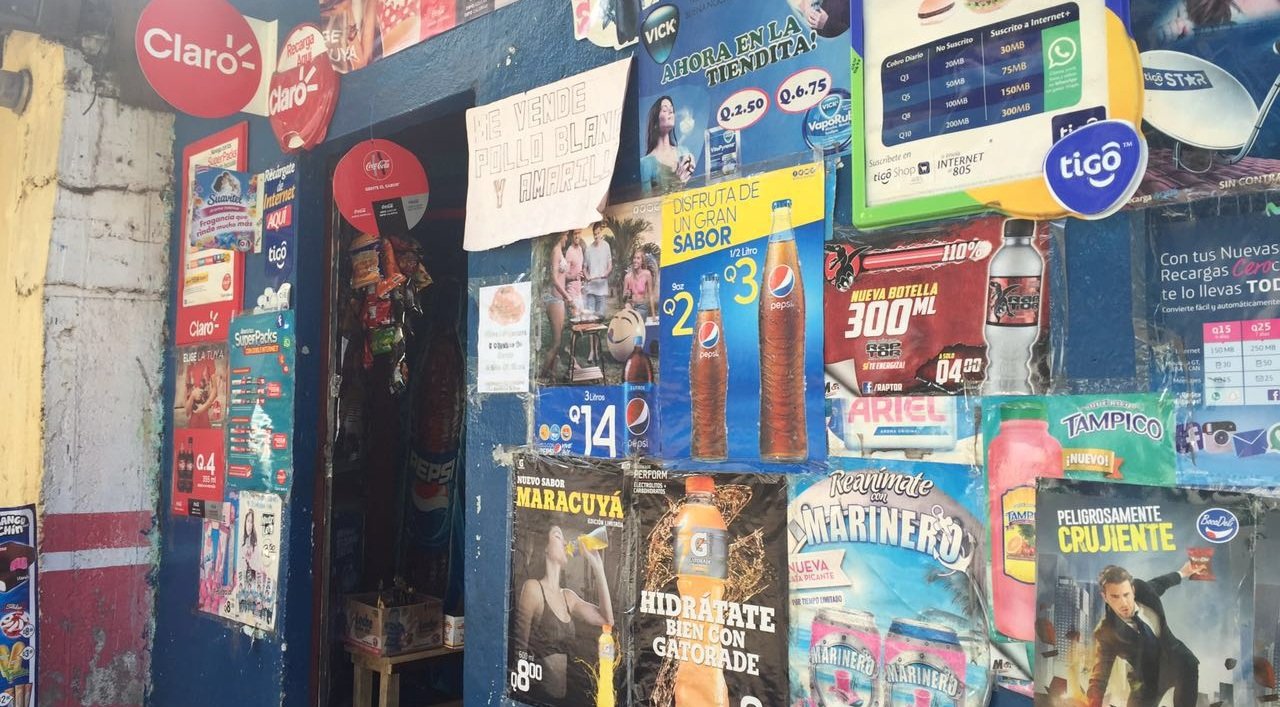
A tienda. There are about 100,000 tiendas in Guatemala – that’s an average of 2 tiendas per city block!
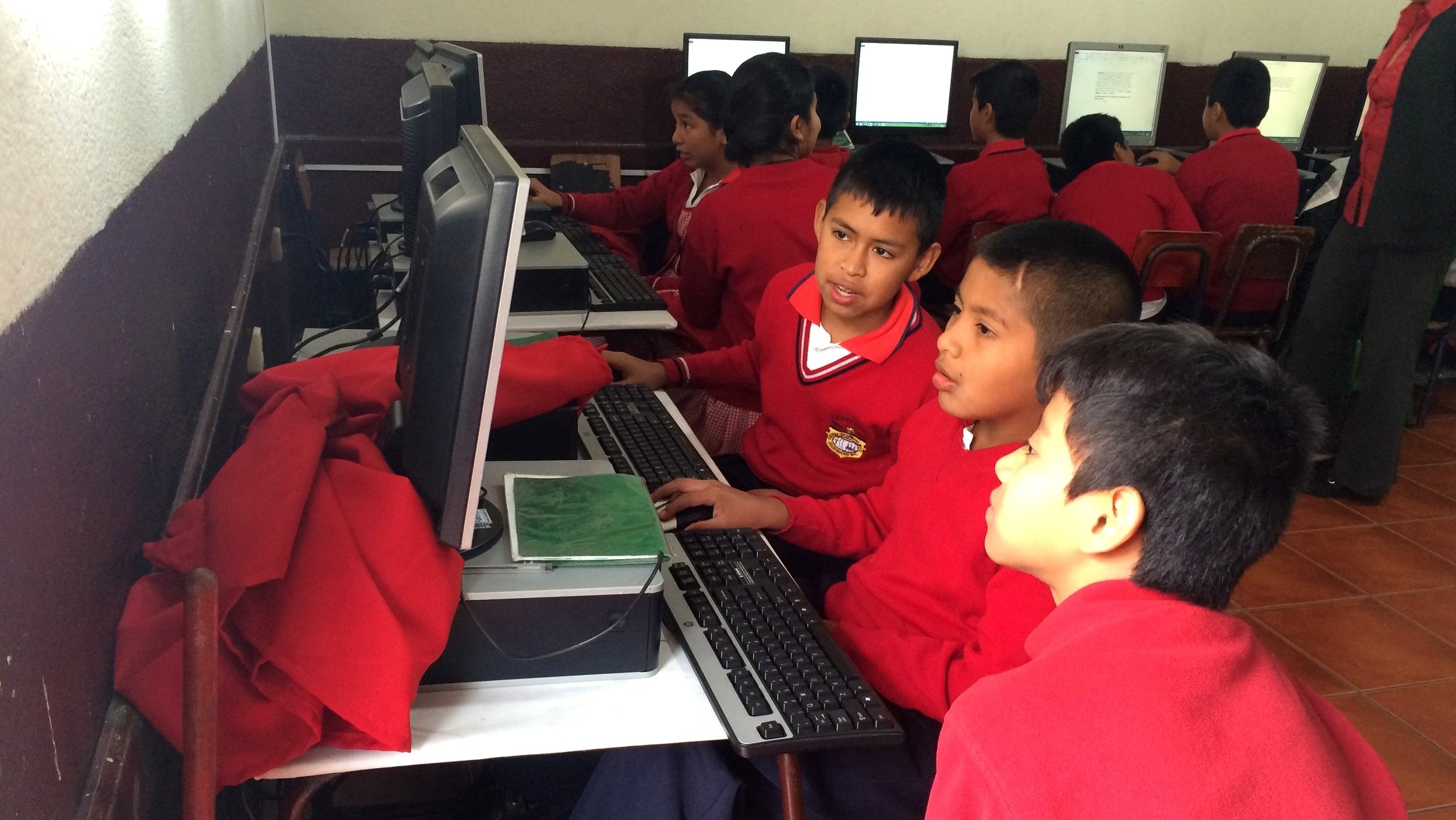
A school

Shai talking to a girl at a library

Old supplies stacked outside a school
Analyzing Our Research
We made a habit of having a “download session” after every day to share our observations, questions, and ideas with each other, and talk about challenges and thoughts going forward. This helped us keep track of the massive amounts of information we were taking in, and group them into themes and places. The post-it was our best friend.

Some post-its – our best friend!

Discussing our ideas at a download session
Identifying Our Design Question
After a few weeks of preliminary market research, it was time to focus on a primary “How Might We?” design question. We had three problems/opportunities standing out to us so far:
Teachers don’t know how to teach computing skills or how to connect these skills with other areas of knowledge.
Children that fall behind in school don’t have enough support to level up.
Tienda (small “mom and pop shop”) owners don’t have a big-picture understanding of their sales and inventory, and have potential for saving more money.
We were torn between education (the first two) and economic empowerment (the third), and we had lots of discussion about what question might be able to connect to a product solution. So in the end, we focused on:
How can an app help tienda owners better understand money in and money out of their business?
This was a major step for our team; it was time to deepen and focus our research.
Going Deeper
The next 2 weeks we conducted more focused research on tiendas: the economic landscape of Guatemalan stores, and the smaller-scale economics of owning a tienda. We had interviews with people ranging from the biggest wholesale store owner in Guatemala to door-to-door conversations in roadside tiendas.
Our interviews started out general – big-picture needs and habits – then phased into more specific – inventory, ordering, selling, pricing, decision-making, and technology usage.
Trust in Interviewing
A big challenge we faced was trust. In some parts of Guatemala, extortions are a big issue for tienda owners – they need to pay a quota to be able to be safe. Many tienda owners were alarmed at the sight of us walking off the street to ask them about their business.
We had about a 50% success rate for tienda interview recruitment and interviews, and we worked hard to create trusting relationships with the group we did have.
“I have a second grade education… I probably won’t be good at this.”
Fernando
“The money I had at the end of yesterday is the money I have at the beginning of today. All I do is make sure I have at least Q250 for change this morning.”
Adán
“I’ve been running this store for over 20 years… I know the price of every single item in this store, but my wife forgets and then asks me.”
Mario
“How do you know if you’re running out of products?”
“I just look at my shelf!”
Mario

Items are often sold in bulk in tiendas, and for discounted prices. Add them all together and it can be a lot to keep track of!
Key insight #1
It isn't common for tienda owners to have an understanding of how money in (sales) & money out (expenses) can create profit for longer periods of time, such as a week, month, or year.
This validated our original hunch from research. We found that some owners use notebooks to record sales & expenses, but most all information – daily profits, inventory – they keep in their heads.
Key insight #2
Tiendas that are family-run use trust as the basis of store management.
Family-owned tiendas tend to feel that they don't need a way to keep track of items because they trust their family to take on the task. But when employing an unrelated clerk, the owner tends to want stricter control over what goes in and comes out.
Key insight #3
There is benefit and value that could be added to a tienda’s management by the convenience of having item prices at the owner’s fingertips.
Most owners mark their item prices up anywhere from 5-20% the wholesale price – some a fixed rate of Q2 – and give discounts on items if it hasn't been sold in a long time, or is bought in bulk. However, these prices are still only kept mentally, and clerks often forget prices and need to ask the store owner.
Key insight #4
A traditional inventory system – keeping track of exactly what needs to be bought and where – does not make sense for many of our users.
Owners don't usually keep track of all their individual items and where they bought them; they'll check what they're missing by visually looking around, and restock their store either from wholesalers or "provedores" – usually whichever happens first.
Key insight #5
Simplicity and flexibility are key. As experience, attitudes, and store-owning habits vary across users, a tienda management solution must integrate into already-existing habits.
Many of our users have limited experience with computers, education, or literacy, while some are the opposite. Complicated software makes the inexperienced user feel inadequate, while over-directed software frustrates the experienced user and the clerk who is working too quickly to record every sale.
User Needs Map
Creating a user needs map allowed us to step back, put ourselves in the person’s shoes, and brainstorm specific actions the person would want to take. Then, we re-mapped these actions based into larger user needs and priority, becoming the basis for our app features.
User Flows
I jumped into sketching out user flows. I held a creative session where other team members sketched out their ideas as well; everyone was sketching!

My sketches
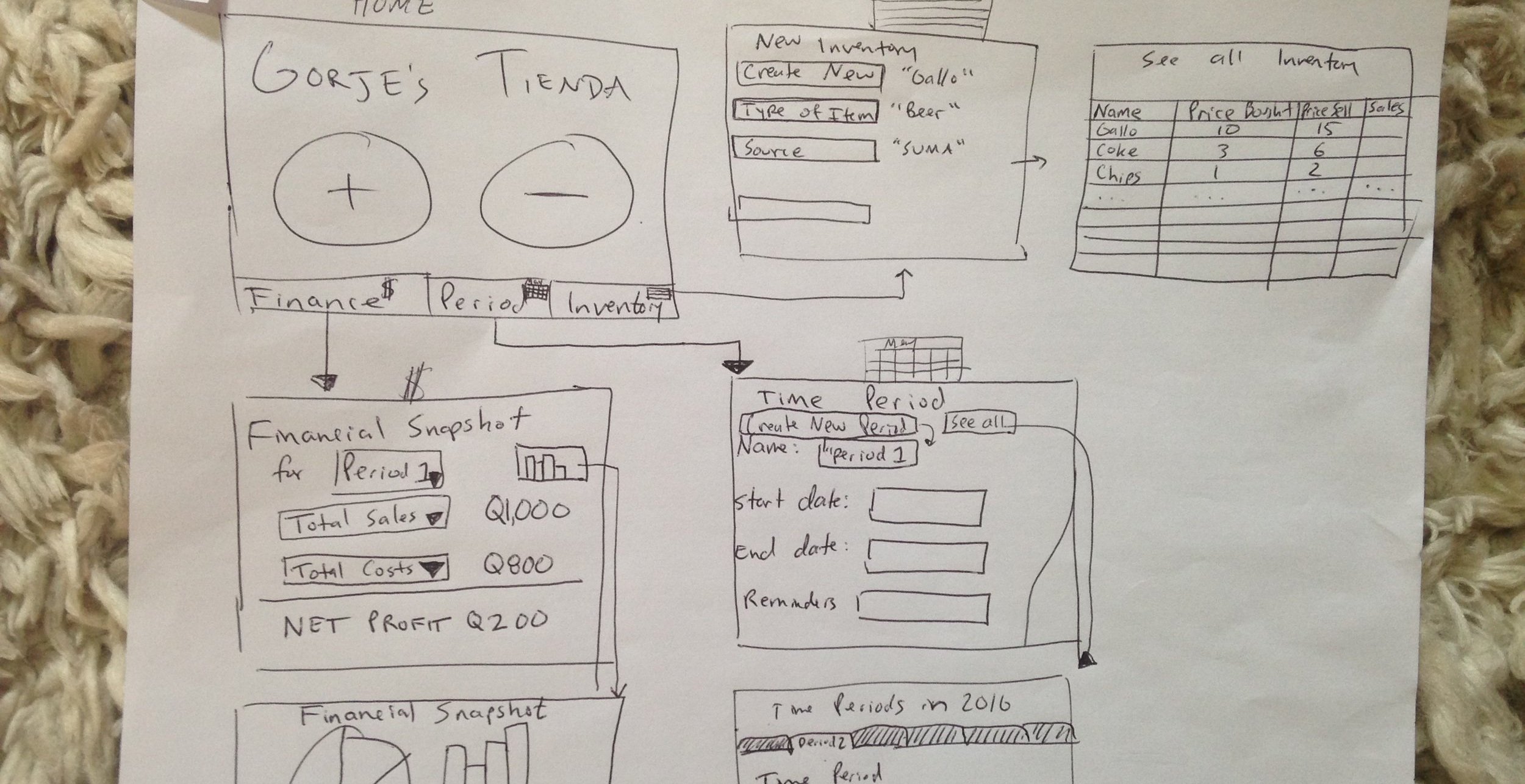
Dacks's Sketches
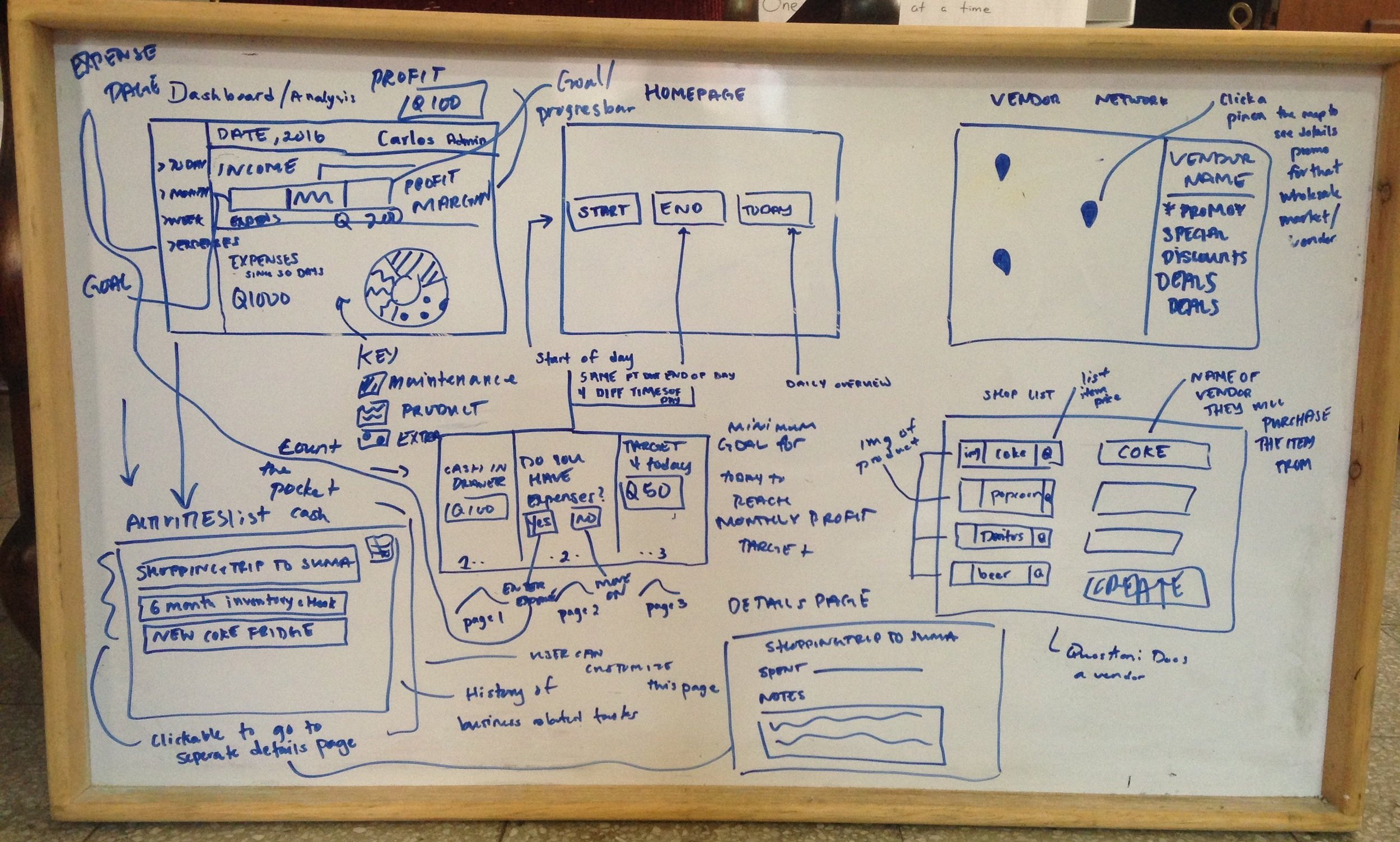
Shai's Sketches
Prototyping
After many more sketches and iterations, I honed down to a design and created our first prototype in Adobe XD. Finally having a visual representation of our app helped immensely in recruiting more people to do user testing with us.
Engineering began their work here. This was the most busy and high-pressure part of the sprint. Design & engineering had to work at the same time, feeding into each others’ processes.
User Testing
We met with many people that we had created relationships with, and put the app in front of them. We got a lot of really valuable feedback on the UX – initial impressions, pain points, and user habits we missed. We generated a ton of ideas for iterations, and then moved into UI testing – icons, buttons, and different types of data visualization.
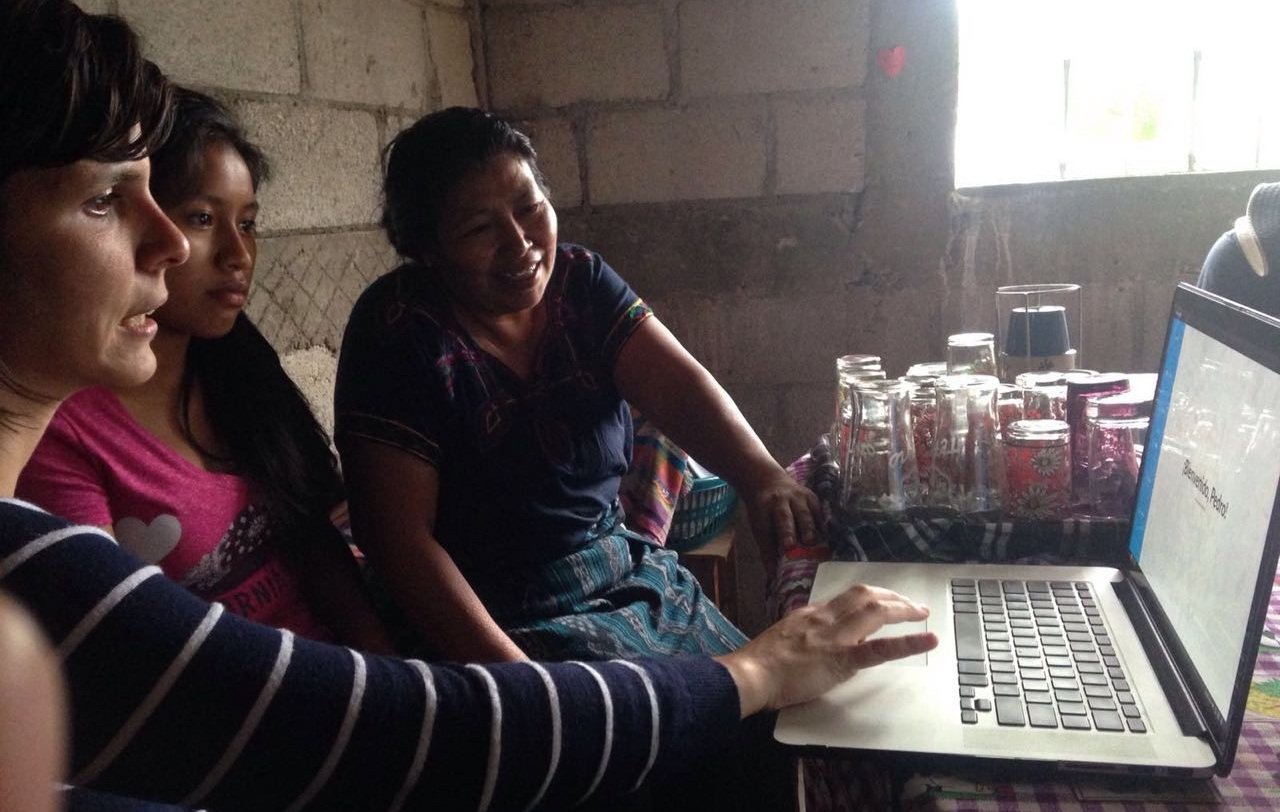
Testing with Florentina and her daughter, who sell tortillas
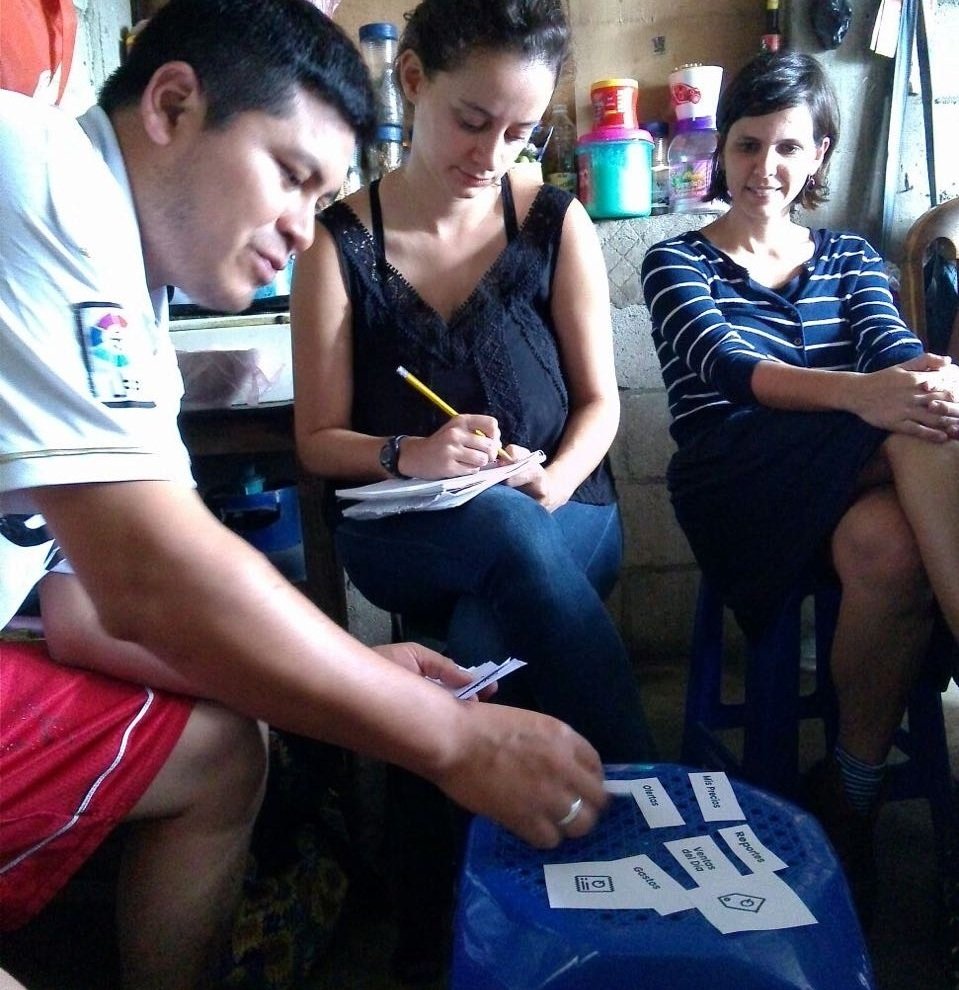
Card sorting to test icons with Pedro, tienda owner

Testing with Adán, tienda owner
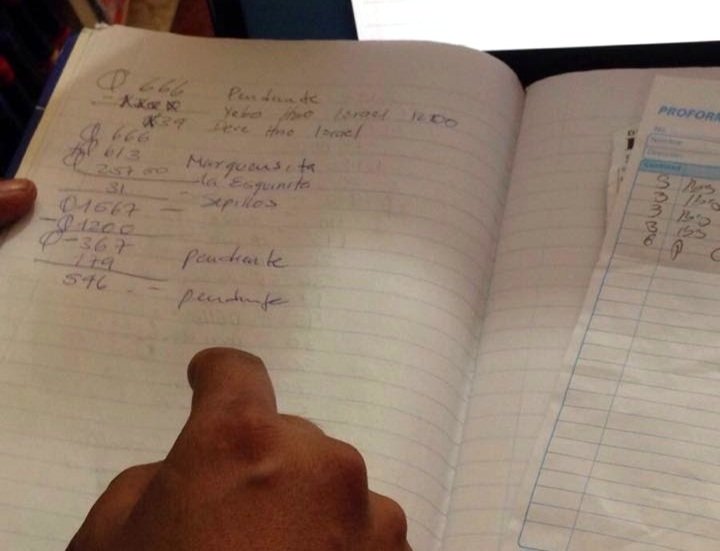
Adán showing us how he uses his notebook to enter sales
The Final App
The engineers built the app in Electron. I jumped in to help with some UI development towards the end for the final tweaks.
Our final app has these core features and capabilities:
Recording Sales and Expenses in a Notebook-Like Interface
The main feature here is the classic budgeting-app split of sales & expenses. It was also important to make the app feel like a notebook to ease the person's transition from notebook to computer, and for flexibility.
Price Database
This was directly requested by our users – a system to lookup the prices of their hundreds of products.
Records & Data Visualization
This was one of our most important features – it empowers the user to see their profits long-term and better understand their business. The main challenge here was finding a data visualization that was easy to read for people, especially since they were often first-time computer users.
Wholesale Offers
Tienda owners have limited tools to make informed decisions when restocking their store from wholesale stores. They wanted a better system to stay connected to wholesale vendors.
We presented our research findings and app to the company.
Future Suggested Work
We knew the fully-functioning budgeting/inventory app of our dreams would be much more ambitious than we had time to achieve in two months. And unfortunately, the app’s further development wasn’t prioritized past the end of this sprint, which I know is a crucial part of the HCD process.
We made sure to document our recommendations for continued work:
Tutorials on how to use the software, and success stories for marketing the app
Password protecting financial information for shop owners from shop workers
Simple images for price database, so less reading/writing
Tools for communicating with wholesalers, not just staying informed
Reflections
These two months of intensive research and designing were challenging and incredibly rewarding. The time frame was short, our goals were ambitious, and our living/working space was small. I learned a lot about myself, my working style, and human-centered design as a full process.
People first
The people always come first, and I continued to learn how integral it is to understand the people we’re designing for, their needs, and their context.
Feasibility
Decide what’s most important, and move on!
Flexibility
Be ready to shift direction when needed.
Shout-out to my incredible design mentor, Joana Filizola, who helped me realize that I’m capable of more than I thought I was.













